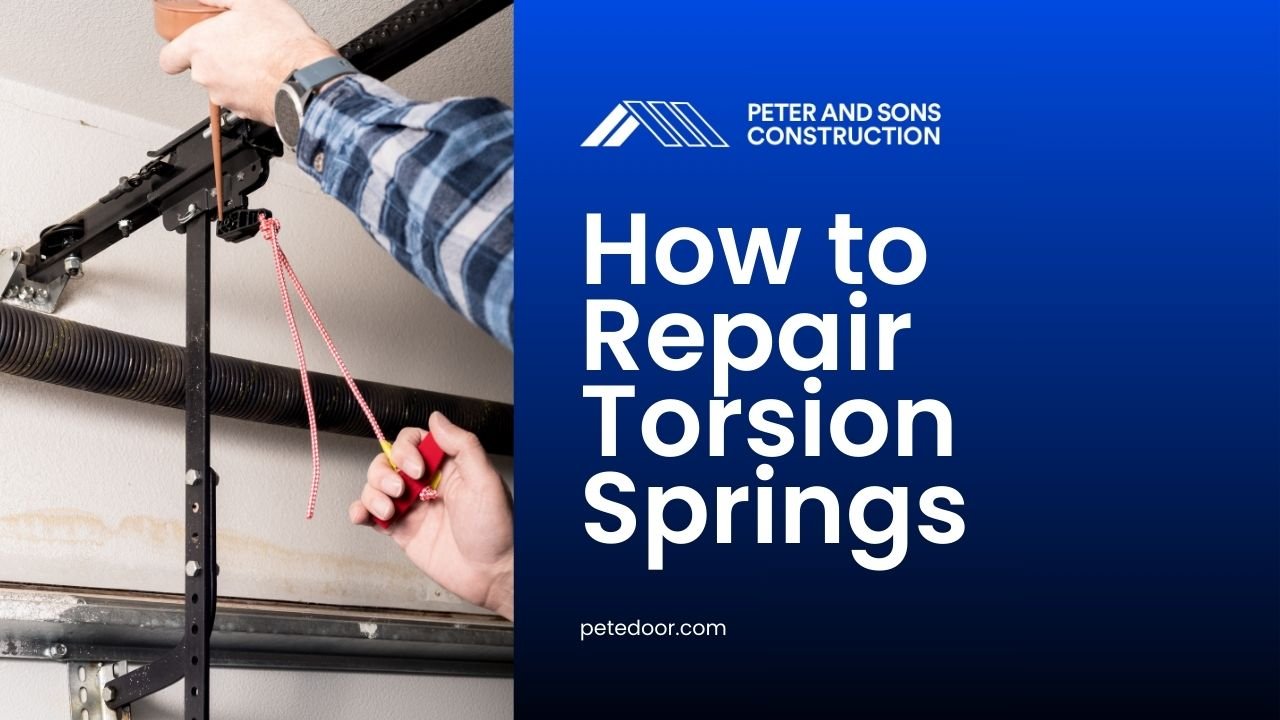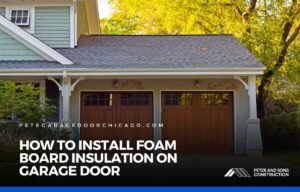How To Repair Torsion Springs For Garage Door
- Editorial Team
- January 24, 2025
- 2:29 am

Garage doors rely heavily on torsion springs to operate smoothly. These springs are engineered to bear the weight of the door and make opening and closing effortless.
When they wear out or break, the door can become difficult or unsafe to use.
Learning how to repair torsion springs for garage door issues is a valuable skill for maintaining the functionality of your garage.
Learning Torsion Springs
Torsion springs are mounted horizontally above the garage door. When the door is opened, the springs unwind, releasing stored energy that helps lift the door.
Conversely, they wind up when the door is closed, reloading energy for the next use.
Over time, factors such as wear and tear, rust, or extreme temperature fluctuations can weaken the springs.
You might notice issues like the door becoming uneven, struggling to open, or slamming shut unexpectedly. Addressing these problems early is key to avoiding further damage.
Tools You’ll Need
Before starting the repair, gather the following tools:
- Winding bars
- Adjustable wrench
- Socket set
- Clamps or locking pliers
- Safety goggles and gloves
Having these tools ensures you’re prepared for a safe and efficient repair.
Step-by-Step Guide - How to Repair Torsion Springs for Garage Door
Prioritize Safety
Torsion springs are under immense tension, which makes safety your top priority.
Start through disconnecting the garage door opener to prevent the door from moving unexpectedly.
Use clamps or locking pliers to secure the door in place, and always wear protective gear like goggles and gloves.
Inspect the Springs
Examine the torsion springs to identify the problem.
Look for signs of damage, such as a visible break, rust, or gaps between the coils.
Knowing the condition of the springs will help you determine if a simple repair is possible or a full replacement is necessary.
Release Tension in the Spring
Examine the torsion springs to identify the problem.
Look for signs of damage, such as a visible break, rust, or gaps between the coils.
Knowing the condition of the springs will help you determine if a simple repair is possible or a full replacement is necessary.
Remove the Damaged Spring
Once the spring is no longer under tension, remove the bolts or brackets securing it to the shaft.
Carefully slide the damaged spring off the shaft, ensuring you don’t disturb other components of the garage door system.
Install the New Spring
Slide the new torsion spring onto the shaft, ensuring it is oriented correctly. Most garage doors have a left-wound spring and a right-wound spring. Secure the new spring with bolts, tightening them firmly but not excessively.
Re-Tension the Spring
Using your winding bars, rewind the spring to its required tension. Each door will have specific tensioning requirements, but as a general rule, you’ll need about 30-40 quarter turns.
Turn the spring in the correct direction—refer to the manufacturer’s manual if you’re unsure.
Test the Garage Door
Once the new spring is properly tensioned, test the garage door through lifting it manually. It should move smoothly and stay in place when positioned halfway open.
If the door doesn’t function correctly, you may need to adjust the tension further.
Common Mistakes to Avoid
When learning how to repair torsion springs for garage door, avoiding mistakes is just as important as following the steps.
Here are some pitfalls to watch out for:
- Using the Wrong Tools – Attempting to replace torsion springs without winding bars is extremely dangerous. Never substitute these with screwdrivers or other tools.
- Overtightening Bolts – Tightening bolts too much can damage the spring or other components. Secure them firmly but avoid overdoing it.
- Ignoring Manufacturer Guidelines – Every garage door system is unique, so always consult the manual for specific instructions.
- Skipping Safety Gear – Failing to wear gloves or goggles increases the risk of injury. Protecting yourself should always be a priority.
When to Call a Professional
While it’s helpful to know how to repair torsion springs for garage door, this task isn’t for everyone.
The high tension of these springs makes them hazardous to handle without proper tools and experience. If you feel uncertain at any step, it’s best to call a professional.
An expert can ensure the repair is completed safely and correctly, saving you time and potential injury.
Maintenance Tips for Torsion Springs
Proper maintenance can extend the lifespan of your torsion springs and reduce the likelihood of breakdowns. Here are a few tips:
- Inspect Regularly
Check your springs every few months for signs of wear, rust, or damage. Early detection can prevent larger issues.\ - Lubricate the Springs
Apply a garage door lubricant to the springs to reduce friction and minimize wear. Avoid using standard oils, which can attract dirt and debris. - Test Door Balance
Disconnect the garage door opener and manually lift the door. If it doesn’t stay in place when halfway open, the springs may need adjustment. - Avoid Overuse
Garage doors have a limited cycle life, so minimize unnecessary openings and closings to prolong the lifespan of your springs.
Leave Repairs to the Experts
Learning how to repair torsion springs for garage door is a useful skill, but it’s not always the best choice for everyone.
Torsion spring repairs require precision, proper tools, and a focus on safety. If you’re unsure or prefer professional help, we’re here for you.
At Peter and Sons Construction, we specialize in garage door repairs, including torsion spring replacements.
Our team ensures your garage door operates safely and efficiently, giving you peace of mind.
Visit us at Peter and Sons Construction to explore our services.
We’re committed to providing reliable, hassle-free solutions for your garage door needs.



